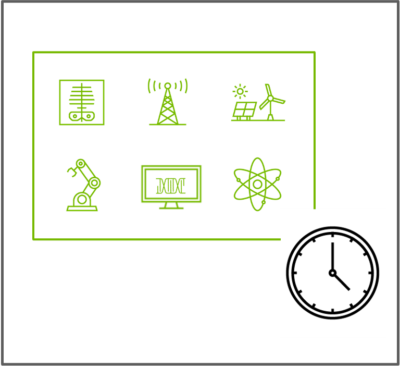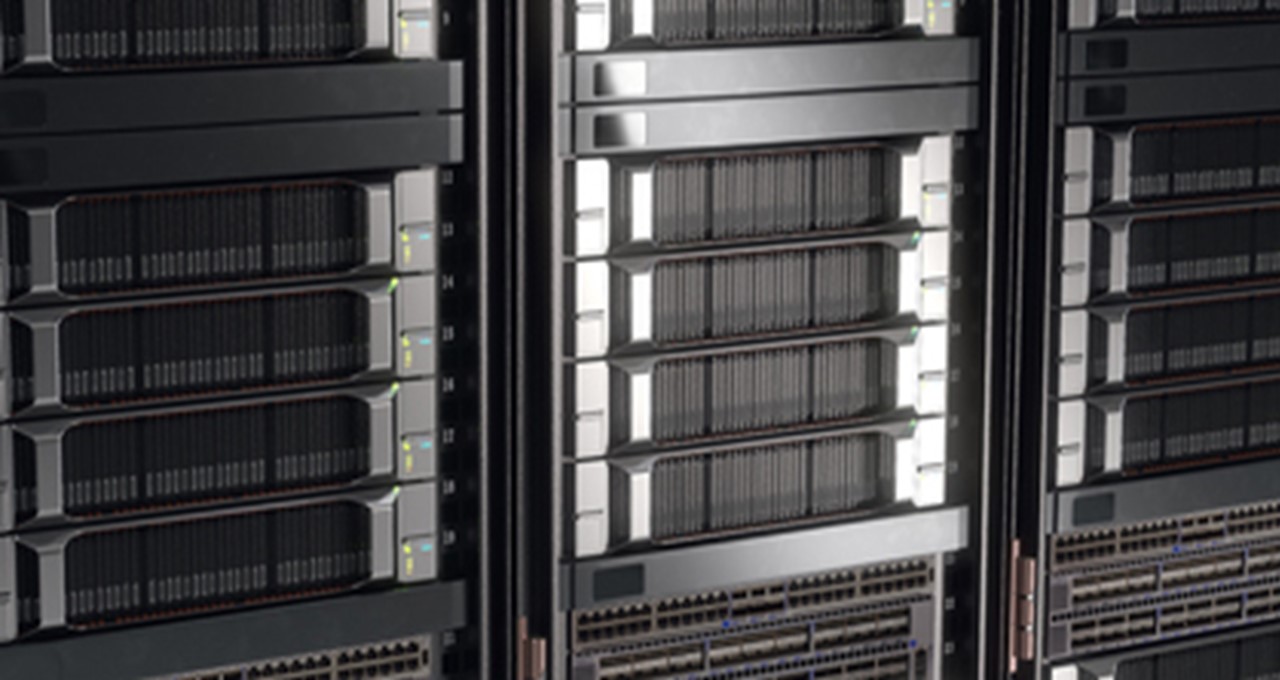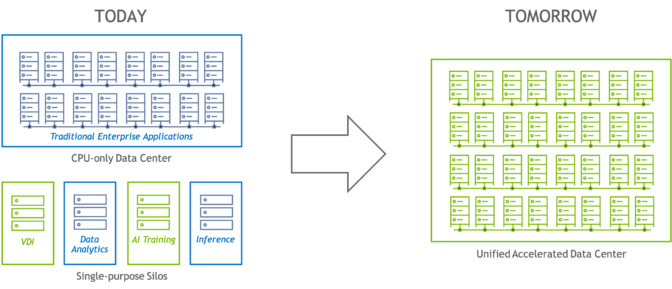IT teams have long worked to optimize hardware and software infrastructure to handle the ever-growing number of enterprise applications. In addition to ensuring those apps can scale, enterprise IT teams must have the right amount of resources required to run them optimally and guarantee uptime levels remain high and consistent.
Now, a new wave of change in the application landscape has enterprises moving to be more driven by data with advanced analytics and AI, and to develop cutting-edge products with graphics-rich virtual desktops.
With these complex applications, unique requirements often eliminate the possibility of leveraging the standard, optimized pool of resources in the data center.
To be sure, dedicating infrastructure for business-critical applications isn’t always a bad thing, especially in the near term. But efficiencies can always be gained when more applications leverage a shared pool of resources.
To bring new applications into their data center environments, IT teams face three frequent challenges:
- Meeting the intense compute, networking and graphics resource demands from modern applications,
- Servicing applications that have complex workflows, and
- Handling a new set of siloed infrastructure when apps can’t use shared resources.
Fortunately, accelerated computing and advances in unifying data center architectures can overcome these issues. But first, let’s dive into the three common roadblocks for enterprise IT.
Intensive Resource Demands
 Modern, data-intensive applications such as training AI models using TensorFlow require a vast number of compute cycles. And working AI models often demand a real-time response. In addition, many of these workloads scale out, such as a data preparation and analytics pipeline orchestrated by Apache Spark, which often involves huge transfers of data across multiple systems.
Modern, data-intensive applications such as training AI models using TensorFlow require a vast number of compute cycles. And working AI models often demand a real-time response. In addition, many of these workloads scale out, such as a data preparation and analytics pipeline orchestrated by Apache Spark, which often involves huge transfers of data across multiple systems.
Designers and engineers are challenged to create higher quality products and content, with photorealistic imagery, faster. Also, now that many people are working from home, virtual desktop applications are requiring more graphics capabilities than ever. For example, video and audio must be delivered with high quality for video conferencing applications to be effective.
Traditional data center infrastructures just aren’t able to provide the necessary compute power to run these applications and support the service levels demanded by the business.
Complex Workflows
 Modern applications are also moving toward a cloud-native architecture, where a large number of containerized microservices are organized into complex workflows.
Modern applications are also moving toward a cloud-native architecture, where a large number of containerized microservices are organized into complex workflows.
The logical applications clusters will spin up, spin down and scale out rapidly as demand fluctuates. This causes challenges to management, scalability, security and visibility. And this increase in size and scale generates a large amount of network traffic across the data center, which is becoming another bottleneck for achieving desired levels of service.
New Apps, New Silos
 Because of the challenges associated with resource demands and workflow complexity, organizations often end up deploying these applications into one-off single-purpose clusters on premises, or in the cloud.
Because of the challenges associated with resource demands and workflow complexity, organizations often end up deploying these applications into one-off single-purpose clusters on premises, or in the cloud.
These new silos then require new toolsets, processes, protocols and sometimes even teams to manage the infrastructure. Since these apps don’t fit the standard mold, they can’t leverage the optimized infrastructure that runs the majority of the enterprise applications.
This results in increased operational overhead, and often these siloes don’t adhere to IT standards for visibility, security and governance. This is especially true if organizational teams are going around IT and just running in the public cloud.
The Solution to These Enterprise IT Challenges
To overcome these challenges, enterprise IT can leverage tools based on the latest advances in server virtualization, software-defined infrastructure, hybrid cloud capabilities and, most recently, orchestration of cloud-native and containerized applications.
One solution is to evolve enterprise IT infrastructure where modern and traditional applications can run optimally on a shared pool of resources.
Today, a majority of enterprise applications in the data center runs on a shared pool of resources managed by a virtualization or orchestration platform. This strategy maximizes the utilization of capital infrastructure and allows operational efficiency to be high. Then, all other applications that can’t leverage that shared pool are run in a silo, where operational efficiencies are fundamentally lower.
Along with key platform partners such as VMware and Red Hat, NVIDIA is evolving the data center architecture so modern applications that require accelerated infrastructure can run alongside traditional applications using NVIDIA-Certified systems, operating systems and management platforms that have been optimized over the past decade and a half.
These solutions are accelerated by NVIDIA technology, including powerful GPUs, virtual GPU software and NVIDIA Mellanox networking, and are integrated into leading virtualization and container orchestration platforms. This combination delivers IT ease of management, deployment, operations and monitoring.
Learn more about this architecture and accelerated computing for enterprise IT.

